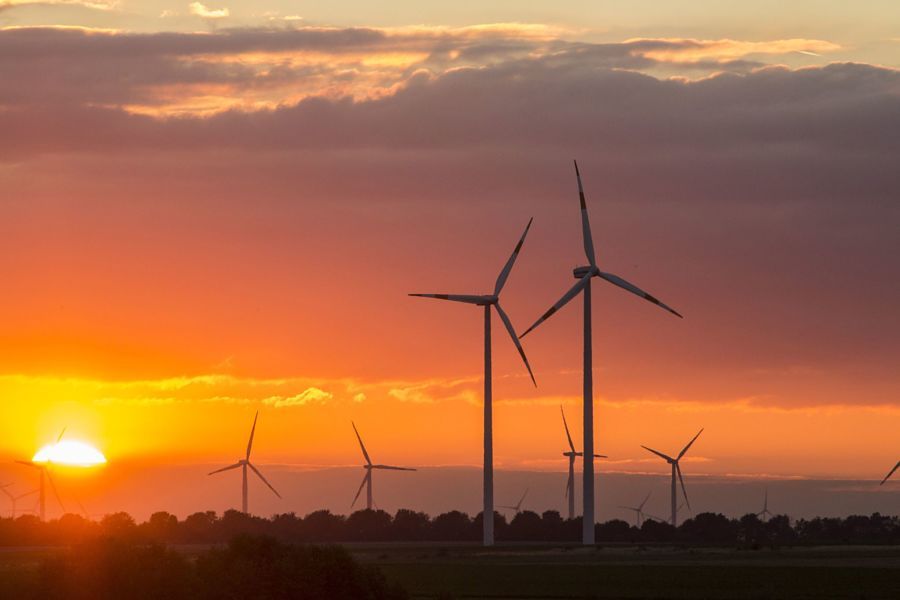The world is at a pivotal point in a transition to clean energy, but the path is anything but straightforward and easy, panelists at last week’s Milken Institute Public Finance Forum said.
The level of interest and resources for renewable energy projects has never been higher, with last year’s Inflation Reduction Act being one example, dedicating roughly $370bn to address climate change.
However, implementation is another matter. Currently, it is common for energy projects to be held up for years in the permitting process, panelists said.
“We’ve had 25 months now of the most extraordinary policy-making period we’ve ever had at the federal level on clean energy and climate,” said Rich Powell, CEO of consulting firm ClearPath, during a climate-tech panel at the Milken event. “I would now argue that government is the primary impediment to getting all this done, and that is because of our permitting regimes.”
The National Environmental Policy Act can cause projects to be delayed by over a decade, Powell said. There is also a four-year wait for new providers to connect to the energy grid, he noted.
Opposition to projects
“At the local level, we have a virus that is spreading in the form of moratoria against different clean technology types,” Powell said.
As examples, he cited halts on new big wind projects in Iowa and what could be start of moratoria on carbon sequestration in Louisiana.
Last year, Berkshire Hathaway subsidiary MidAmerican Energy Company canceled plans to build 30 wind turbines in Madison County, Iowa, a project that could have netted the firm $81m in tax credits, Forbes reported.
That followed an unsuccessful court fight and consistent opposition from residents who have said they see such projects as a blight, according to the publication.
In Louisiana, there has been resistance to more carbon sequestration. There, opponents have contended that carbon capture and storage could have negative consequences for local communities that have already lived with pollution generated by energy companies, according to reporting from the Associated Press. In part, that argument is carbon sequestration could help allow power plants to exist for longer, burning more fossil fuels.
“This is really problematic, because if we can’t agree on anything to build in all of these communities, it’s going to be really difficult to get projects cited, planned and financed,” Powell said.
Crucial timing
The timing for starting some projects – particularly carbon capture and sequestration – is critical, as the financial incentives for them are fleeting, said Pooja Jain, senior vice president of sustainable strategic innovation at WSP USA, speaking at the panel.
“Permitting is certainly one of those things that if you don’t have a predictable outcome, we’re not going to make these infrastructure projects really investible,” Jain said.
The San Francisco-Oakland Bay Bridge provides a valuable example, she said, with replacing a portion of it going from an initial estimate of $250m in 1995 to $6.5bn by the time one span of it opened in 2013.
“Put this in the context of a carbon capture and underground sequestration project. How is that project investible? How is this attractive to infrastructure investors? It’s just not,” Jain said. “When you delay projects in today’s market the cost of construction is going up very rapidly. Case in point, the cost of steel went up 20% in one year.”
High-carbon sectors
Construction itself is a leading source of emissions in the US, as the industrials sector remains one of the most difficult to decarbonize, along with long-distance trucking, panelists noted.
Steel, for example, is notoriously difficult to make without emitting carbon dioxide, as that is a byproduct of the fossil-fuel-based energy used to heat ore as well as a byproduct of the ore turning into iron.
A Swedish company appears to have an answer for that, however.
“It is already possible to do ‘green’ steel,” said Mercedes García Pérez, head of global issues and innovation at the Delegation of the European Union to the US.
Sweden-based Hybrit, uses hydrogen as a reactant, emitting water rather than carbon dioxide.
Technology could also help reduce pollution from traditional trucking via electric charging stations along port routes in the US, said Dawn Lippert, CEO of Elemental Exelerator, a nonprofit that invests in energy, mobility, water, circular economy and agriculture startups.
“Ports are an enormous source of emissions,” Lippert said. “It’s also an equity issue, as many in those frontline communities really suffer from air pollution from those facilities.”
Road blocks
The Inflation Reduction Act provides massive incentives for clean energy investments, but the provisions in the law fall short of what is needed to get to net zero by 2050, said John Podesta, senior adviser to President Joe Biden on clean energy. Podesta, also speaking at Milken’s event, is overseeing implementation of the clean energy provisions of the act.
“All we have to do is transform the global economy on a size and scale that’s never occurred in human history, and we have to do it in the next 30 years. This is a giant down payment, there is no question about it,” Podesta said. “The private sector is obviously reacting to it … About two-thirds of the law is based around tax credits that can go to private companies but also can be aimed at community-based organizations, cities and states, etc.”
The Treasury must issue “a mountain of guidance” to put the tax incentives in place, he said.
In addition, “there are continuing problems with permitting, infrastructure more generally, energy infrastructure, in particular, in this country,” he said. “We have to do a much better job of speeding up and making more predictable, getting community engagement earlier in the process, to make sure those permits happen.”








